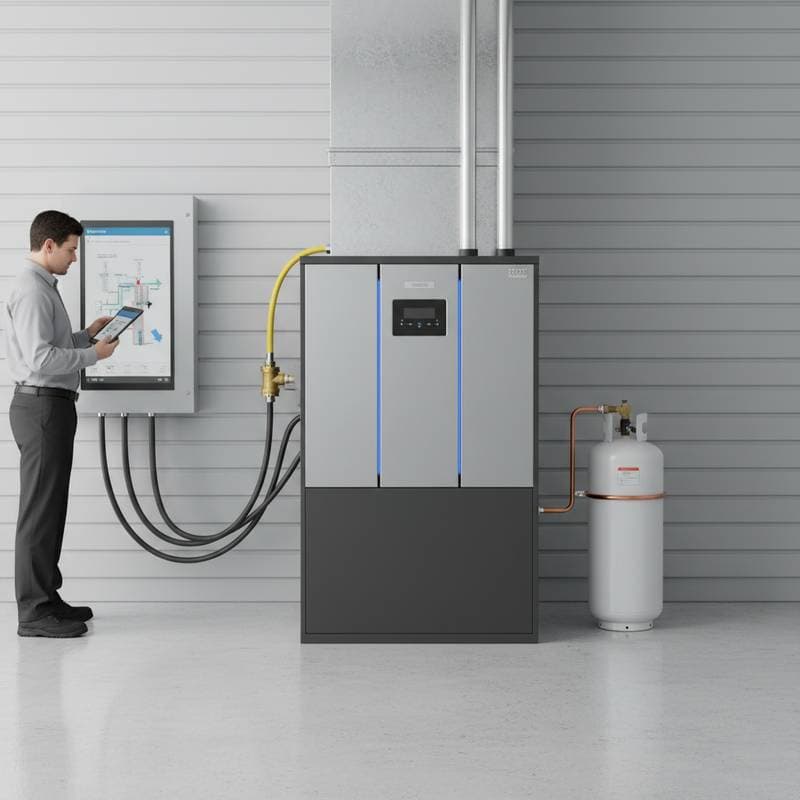Why 58% of Homeowners Are Switching to HVAC Maintenance Plans in 2025
Understanding the Surge in HVAC Maintenance Plan Adoption
Nationwide, an increasing number of homeowners enroll in HVAC maintenance plans, with projections indicating that 58% will make this choice in 2025. This trend toward subscription-based HVAC services highlights a preference for convenience, stable expenses, and preventive care for heating and cooling systems. Plans generally cost between $150 and $600 annually, varying by equipment type and service extent.
This guide details the motivations behind the rise in HVAC subscription services, explains their operations, outlines expenses, and highlights standout advantages. It also examines adoption drivers and provides criteria for evaluating providers.
Core Reasons Homeowners Choose HVAC Subscription Services
1. Stable Expenses and Financial Predictability
HVAC breakdowns often lead to substantial unforeseen costs. Replacing a compressor may exceed $1,000, and comprehensive system overhauls can surpass $5,000. Maintenance plans distribute these expenses across the year, enabling precise budgeting and long-term financial control.
Homeowners value the certainty of fixed upkeep payments, which integrate seamlessly into household finances.
2. Minimizing Risk of Significant Failures
Scheduled evaluations identify minor problems early, preventing escalation into costly repairs. Professionals detect issues such as frayed belts, refrigerant deficiencies, or obstructed airflow well in advance of complete breakdowns. Consistent tune-ups decrease emergency incidents by as much as 40%, fostering reliability and long-term savings.
3. Enhancing Operational Efficiency
Maintained coils, precise refrigerant charges, and serviced parts enable HVAC systems to function at optimal levels. Such care reduces energy consumption by 10% to 20%, directly lowering utility statements. A subscription ensures these assessments occur systematically, eliminating the need for individual scheduling.
4. Prolonging System Durability
Systems under regular maintenance endure several additional years compared to those with sporadic attention. Lubrication, cleaning, and adjustments lessen strain on critical elements like motors and compressors. This approach yields fewer replacements and maximizes initial investments.
5. Expedited Service Access
Priority scheduling stands out as a key attraction of HVAC subscriptions. In high-demand periods for heating or cooling, securing appointments proves challenging. Members receive favored slots, often bypassing waitlists for non-subscribers during repairs or routine visits.
6. Access to Member-Only Savings
Participants typically receive reductions on repairs, components, or new installations. For properties with aging equipment, these benefits frequently cover the plan's fee. Certain providers extend loyalty incentives or credits applicable to upgrades.
Primary Drivers of HVAC Service Plan Growth
Advancements in System Design
Contemporary HVAC units incorporate sophisticated elements, including variable-speed drives, intelligent thermostats, and multi-zone configurations. While these enhance user comfort, they demand expert handling for diagnostics and tuning. Subscriptions allow professionals to manage these intricacies effectively.
Escalating Service and Material Expenses
Technician compensation and part prices continue to rise, inflating repair bills. Plans secure discounted rates through extended commitments, buffering against these increases.
Commitment to Sustainability
Efficiency and emission reductions rank high among homeowner priorities. Routine servicing maintains peak operation, curbing energy waste and supporting eco-friendly practices.
Boosting Property Marketability
A verifiable maintenance history elevates home appeal. Prospective buyers trust systems with proven care, and subscription records provide straightforward documentation.
Alignment with Subscription Lifestyles
Subscription formats permeate modern routines, from entertainment to groceries. Homeowners extend this model to HVAC care, favoring scheduled, hassle-free support over crisis responses. These services integrate effortlessly into such patterns.
Securing Quotes for HVAC Maintenance Plans
To compare options, obtain detailed written proposals outlining services, visit schedules, and limitations. Inquire about bundle discounts or urgent response features. Reviewing three or more proposals promotes competitive rates and robust protection.
Essential Inquiries for Providers
- Which tasks comprise each service visit?
- Do filters, refrigerant, or components fall under plan fees?
- Does the agreement provide emergency or off-hour support?
- How does priority booking function in busy periods?
- Exist reductions for additional systems or sites?
- Can the plan transfer with property ownership?
- What assurances or protections apply to services?
- Outline renewal and termination procedures.
- Provide digital maintenance documentation?
- Confirm technician licensing, certification, and insurance.
Protecting Your HVAC Through Consistent Care
Beyond mere temperature control, HVAC maintenance preserves a critical home asset, controls energy outlays, and averts major disruptions. The expanding adoption of subscription plans underscores a shift toward dependable, cost-managed solutions.
Selecting a plan yields reliable operation, extended durability, and enhanced property worth. Focus on regular engagement, whether basic or advanced, to realize enduring efficiencies and seasonal comfort.





